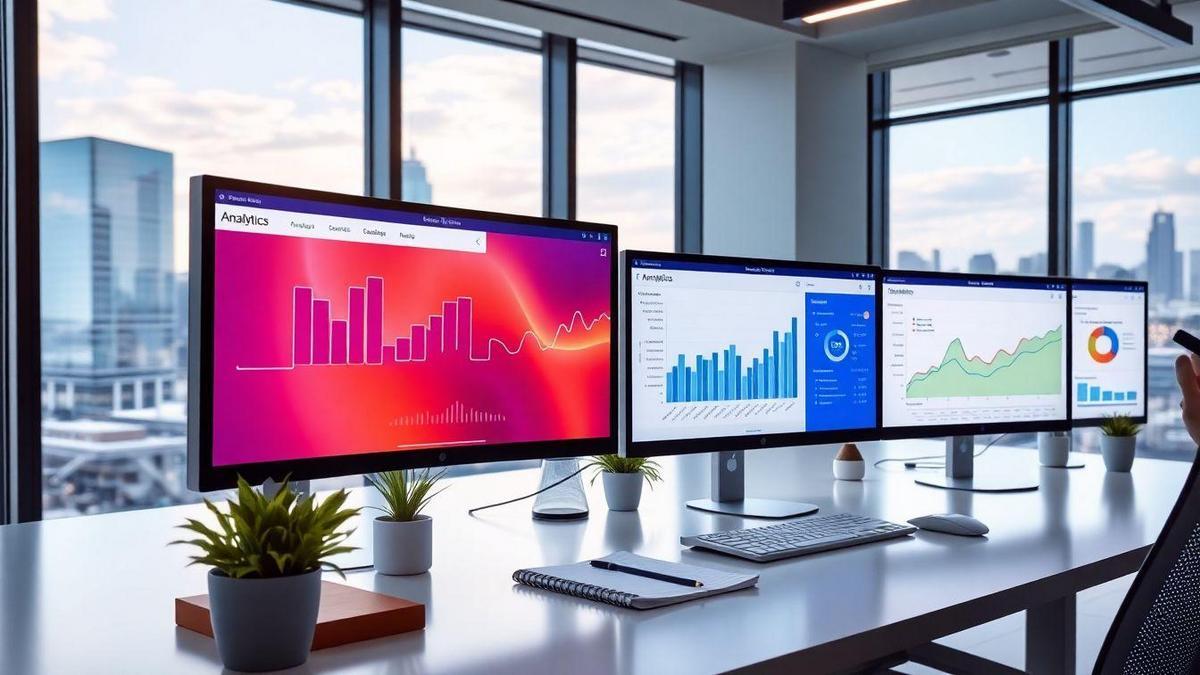Slow Site? 7 Most Common Technical Errors and How to Fix Them is your go-to guide for tackling those frustrating website slowdowns. Have you ever felt your site dragging its feet? We’ll dive into what causes slow loading times and how they can hurt your visitors. Get ready to uncover common technical mistakes that slow you down and find easy fixes. Plus, we’ll share some handy tips to help your site zoom along like never before!

Understanding Slow Site Issues
What Causes a Slow Site?
A slow website can be a real headache. Several factors might be dragging your site down. Here are some common culprits:
- Large Images: If your images are too big, they can slow things down. Think of it like trying to fit a big suitcase into a tiny car—it’s just not going to work smoothly.
- Too Many Plugins: Using too many plugins can weigh your site down. Each one adds extra code, which can slow everything down.
- Poor Hosting: If you’re using a cheap hosting service, you might be getting what you pay for. Sometimes, these services just can’t handle a lot of traffic.
- Unoptimized Code: If your website’s code isn’t clean, it can cause delays. It’s like trying to read a book with pages stuck together.
Impact of Slow Loading Times on Users
When your site takes its sweet time to load, it can really annoy visitors. Here’s how it affects them:
- Frustration: Users hate waiting. If your site takes too long, they might just leave.
- Less Engagement: If your site is slow, people won’t stick around to explore. They’ll bounce away like a rubber ball.
- Lower Conversions: A slow site can mean fewer sales. People want quick and easy, not a frustrating experience.
Why Speed Matters for Your Website
Speed is everything in today’s online world. Here’s why:
| Reason | Explanation |
|---|---|
| User Experience | Faster sites make users happy and keep them engaged. |
| SEO Ranking | Search engines prefer speedy sites, boosting your rank. |
| Higher Conversion Rates | Quick sites often lead to more sales and sign-ups. |
In short, if your site is slow, you might be missing out on a lot of opportunities.
Common Technical Errors That Slow You Down
Identifying Technical SEO Errors
When you’re running a website, spotting technical SEO errors can feel like searching for a needle in a haystack. But don’t worry! Here are some common culprits that might be dragging your site down:
- Broken Links: These are like dead ends on a road. They frustrate visitors and can hurt your rankings.
- Slow Loading Times: If your site takes too long to load, people will bounce away faster than you can say “website.”
- Missing Alt Text: Images without alt text are like books without covers. They miss out on important descriptions that help search engines understand your content.
- Poor Mobile Optimization: If your site doesn’t work well on mobile devices, you’re missing out on a huge audience.
How Errors Affect Your Site’s Performance
Technical errors can have a major impact on your site’s performance. Here’s how:
| Error Type | Effect on Performance |
|---|---|
| Broken Links | Leads to higher bounce rates and lower user satisfaction |
| Slow Loading Times | Decreases user engagement and increases abandonment |
| Missing Alt Text | Reduces visibility in search engines |
| Poor Mobile Optimization | Limits access for mobile users, affecting traffic |
Imagine you’re trying to read a book, but the pages are stuck together. Frustrating, right? That’s how users feel when they encounter these errors on your site. They’ll likely leave and find a competitor who offers a smoother experience.
The Importance of Regular Site Audits
Think of regular site audits as a check-up for your website. Just like you wouldn’t skip a doctor’s appointment, you shouldn’t skip checking your site for errors. Regular audits help you catch issues before they snowball into bigger problems.
By keeping an eye on your site’s health, you can improve user experience and boost your rankings. Remember, a well-maintained site attracts more visitors and keeps them coming back for more.

Fixing Slow Loading Times
Quick Fixes for Immediate Improvement
If your site is dragging its feet, don’t panic! Here are some quick fixes you can try right now to boost your speed:
- Optimize Images: Large images can slow your site. Use tools like TinyPNG to compress them without losing quality.
- Minimize HTTP Requests: Reduce the number of elements on your page, like scripts and stylesheets. Fewer requests mean faster loading.
- Enable Browser Caching: This allows returning visitors to load your site faster by storing some data on their devices.
Long-Term Solutions for Lasting Speed
For a more lasting solution, consider these strategies:
- Use a Content Delivery Network (CDN): A CDN can distribute your content across multiple servers, making it quicker for users to access.
- Choose a Reliable Hosting Provider: Sometimes, your hosting service can be the bottleneck. A good host can make a big difference.
- Regularly Update Software: Outdated plugins or themes can slow down your site. Keep everything updated to ensure optimal performance.
Tools to Help You Fix Loading Issues
Here’s a handy table of tools that can help you identify and fix loading issues:
| Tool Name | Purpose |
|---|---|
| Google PageSpeed | Analyze your site’s speed |
| GTmetrix | Detailed performance reports |
| Pingdom | Monitor uptime and performance |
| WebPageTest | Test your site from different locations |
These tools can provide valuable insights into what’s slowing your site down and how to tackle those issues effectively.
Website Optimization Tips
Best Practices for Enhancing Site Speed
If your site is lagging, you’re not alone. A slow site can drive visitors away faster than you can say “buffering.” Here are some best practices to boost your site’s speed:
- Minimize HTTP Requests: Each element on your page—like images, scripts, and stylesheets—makes a request. Keep these to a minimum.
- Use a Content Delivery Network (CDN): CDNs distribute your content across various servers worldwide, speeding up access for users, no matter where they are.
- Reduce Server Response Time: Aim for a server response time of under 200 milliseconds. This can make a big difference in load times.
How to Optimize Images and Files
Images can be a major culprit in slowing down your site. Here’s how to keep them in check:
- Compress Images: Use tools like TinyPNG or ImageOptim to shrink image sizes without losing quality.
- Use the Right Format: JPEGs are great for photos, while PNGs work better for graphics with fewer colors. Avoid using BMPs as they are often too large.
- Lazy Loading: This technique loads images only when they’re in the viewport. It helps improve initial load times.
The Role of Caching in Speed Improvement
Caching is like having a shortcut to your favorite destination. It saves data temporarily to make loading faster. Here’s how it works:
| Type of Caching | Description | Benefits |
|---|---|---|
| Browser Caching | Stores files on a user’s device | Reduces load times for repeat visits |
| Server Caching | Saves dynamic content on the server | Decreases server load and speeds up delivery |
| CDN Caching | Distributes cached content globally | Speeds up access for users worldwide |
Implementing caching can dramatically improve your site’s speed. It’s a simple fix that can lead to big gains!

Troubleshooting Website Problems
Steps to Diagnose Slow Site Issues
When your website is running slow, it can feel like you’re dragging a heavy anchor behind you. No one likes waiting for a page to load. Here’s how you can start diagnosing the problem:
- Check Your Internet Connection: Sometimes, the issue isn’t your site. Make sure your connection is stable.
- Use Speed Testing Tools: Tools like Google PageSpeed Insights or GTmetrix can help pinpoint what’s causing the slowdown.
- Review Your Hosting Service: Is your hosting reliable? Sometimes, switching to a better plan can make a world of difference.
- Look for Large Files: Images and videos can be huge. Make sure they’re optimized for the web.
- Check Plugins and Themes: Too many plugins can slow things down. Deactivate any that you don’t use.
Common Mistakes to Avoid When Troubleshooting
When tackling slow site issues, it’s easy to trip over some common mistakes. Here’s what to watch out for:
- Ignoring Mobile Users: Many visitors come from mobile devices. If your site is slow on mobile, you’re missing out.
- Neglecting Updates: Outdated plugins and themes can lead to performance issues. Keep everything up to date.
- Overloading on Plugins: Too many can clash and slow down your site. Only keep the essentials.
- Not Checking Server Response Time: Sometimes, the server is the bottleneck. Make sure it’s performing well.
When to Seek Professional Help
If you’ve tried everything and your site is still slow, it might be time to call in the pros. Here’s when you should consider it:
- Persistent Issues: If the slow performance sticks around despite your efforts.
- Complex Problems: If you’re not tech-savvy, some issues might be beyond your grasp.
- Business Impact: If slow speeds are hurting your sales or engagement, don’t hesitate to get help.
| Scenario | Action |
|---|---|
| Slow site after troubleshooting | Consider professional help |
| Can’t identify the issue | Look for expert assistance |
| Significant drop in traffic | Time to consult a web expert |
The Role of Hosting in Site Speed
How Your Hosting Provider Affects Performance
Your hosting provider plays a huge role in how fast your site loads. Think of it like the foundation of a house. If the foundation is weak, the whole house can crumble. The same goes for your website. If your hosting is slow, your site will be slow too.
Here are a few ways your hosting can impact performance:
- Server Location: If your server is far from your users, it takes longer for data to travel.
- Uptime: A reliable host should have a high uptime percentage. If your site goes down, you lose visitors.
- Resource Limits: Some hosting plans limit how much traffic you can handle. If you exceed this, your site may slow down or crash.
Choosing the Right Hosting Plan for Speed
When you’re picking a hosting plan, speed should be a priority. Here are some options and what they mean for you:
| Hosting Type | Speed | Cost | Best For |
|---|---|---|---|
| Shared Hosting | Moderate | Low | Newbies or small sites |
| VPS Hosting | Fast | Medium | Growing businesses |
| Dedicated Hosting | Very Fast | High | Large sites or e-commerce |
Each type has its pros and cons. If you’re just starting out, shared hosting might be enough. But if you expect a lot of traffic, consider VPS or dedicated hosting for better speed.
Shared vs. Dedicated Hosting: What’s Best for You?
When deciding between shared and dedicated hosting, think about your needs.
- Shared Hosting: You share resources with other sites. This can slow you down if other sites have high traffic. It’s budget-friendly and great for small sites.
- Dedicated Hosting: You get all the resources to yourself. This means faster speeds and better performance, but it comes at a higher price. Perfect for larger sites with lots of visitors.
In short, if your site is growing, you might want to move to dedicated hosting. But if you’re just starting, shared hosting can work just fine.

Monitoring Your Site’s Performance
When you run a website, keeping an eye on its performance is like checking the oil in your car. You want everything to run smoothly. If your site is slow, it can drive visitors away faster than a speeding ticket. So, let’s dive into some tools and tips to help you monitor your site’s performance effectively.
Tools to Measure Website Speed
There are plenty of tools out there that can help you check how fast your website is running. Here are a few you might want to consider:
| Tool Name | Description |
|---|---|
| Google PageSpeed Insights | Analyzes the content of your site and gives suggestions to make it faster. |
| GTmetrix | Provides insights on your site’s speed and performance, plus tips for improvement. |
| Pingdom | Offers a detailed performance overview and monitors your site’s uptime. |
Using these tools can feel like having a speedometer for your website. They’ll show you exactly where you stand and what needs fixing.
Understanding Performance Metrics
Now that you have tools to measure speed, it’s crucial to understand the performance metrics they provide. Here are some key metrics to keep an eye on:
- Load Time: How long it takes for your page to fully load.
- Time to First Byte (TTFB): How long it takes for the server to respond to a request.
- Page Size: The total size of the page, including images, scripts, and styles.
Knowing these metrics helps you pinpoint what’s slowing your site down. For instance, if your load time is high, it might be time to compress those images or clean up your code.
Setting Up Alerts for Slowdowns
Imagine you’re having a party, and suddenly the music stops. You want to know why! Setting up alerts for your site’s performance is like having a friend who tells you when the music fades. You can use tools like Uptime Robot or Pingdom to set up alerts.
Here’s how to do it:
- Choose a Monitoring Tool: Pick one that fits your needs.
- Set Alert Parameters: Decide what metrics you want to be notified about.
- Receive Notifications: Get alerts via email or SMS when something goes wrong.
This way, you’ll be the first to know if your site slows down, allowing you to jump in and fix issues before they affect your visitors.
Enhancing Site Speed Through Code Optimization
Minimizing CSS and JavaScript
When you think about speeding up your website, minimizing CSS and JavaScript is a game changer. It’s like cleaning out your closet—less clutter means you can find what you need faster. By reducing the size of your CSS and JavaScript files, you make your site load quicker. Here’s how you can do it:
- Combine files: Instead of having multiple CSS or JavaScript files, merge them into one. This cuts down on the number of requests your server has to handle.
- Remove unused code: Go through your styles and scripts and delete anything that isn’t being used. It’s like tossing out old clothes that you’ll never wear again.
- Minify your code: Use tools that remove unnecessary spaces and comments from your code. This makes the files smaller, helping your site to load faster.
The Benefits of Clean Code for Performance
Clean code is like a well-organized toolbox. When your code is neat and tidy, your website runs smoother. Here are some benefits of keeping your code clean:
| Benefit | Description |
|---|---|
| Faster Loading Times | Clean code means less data to load, speeding things up. |
| Easier Maintenance | It’s simpler to fix bugs or add features when the code is organized. |
| Better User Experience | A fast site keeps visitors happy and encourages them to stay longer. |
How to Use Content Delivery Networks (CDNs) for Speed
Using a Content Delivery Network (CDN) is like having multiple delivery trucks spread out across the country. Instead of one truck delivering to everyone, you have many trucks closer to your visitors. Here’s how a CDN can help:
- Faster Load Times: CDNs store copies of your website on servers around the world. When someone visits your site, they get the version closest to them, which speeds things up.
- Reduced Server Load: By distributing the traffic, your main server doesn’t have to work as hard. It’s like sharing the workload among friends.
- Increased Reliability: If one server goes down, others can take over, keeping your site up and running.
In summary, optimizing your code and using a CDN can significantly enhance your site speed. If your site is slow, remember to check out the “Slow Site? 7 Most Common Technical Errors and How to Fix Them” to tackle those pesky issues head-on.

The Importance of Regular Updates
Keeping Your Site’s Software Updated
Imagine your website as a car. If you don’t keep up with regular maintenance, it’s bound to break down eventually. Keeping your site’s software updated is just like changing the oil in your car. It keeps everything running smoothly. When you update your software, you fix bugs and patch security holes that could let in unwanted visitors.
Here’s a quick checklist for you:
- Check for updates regularly: Set a reminder every month.
- Backup your site before updating: This way, if something goes wrong, you can restore it.
- Test updates in a safe environment: Use a staging site to avoid issues on your live site.
How Updates Can Fix Common Errors
Updates can tackle those pesky errors that pop up now and then. Think of them as a friendly mechanic who knows just how to fix your car’s issues. When you update your site, you might just resolve problems like slow loading times or broken links.
Here’s a table that shows some common errors and how updates can help:
| Common Errors | How Updates Help |
|---|---|
| Slow loading times | Optimizes performance |
| Broken links | Fixes or removes outdated links |
| Security vulnerabilities | Patches security issues |
| Compatibility issues | Ensures new features work well |
Benefits of Staying Current with Technology
Staying current with technology is like wearing the latest shoes; it keeps you stylish and in the game. Regular updates can lead to better performance, improved security, and even a better user experience.
Some benefits you might enjoy include:
- Faster load times: Your visitors won’t bounce away.
- Better security: Protects your data and your visitors’ data.
- Enhanced features: New tools can make your site more appealing.
Keeping your site updated is crucial. It’s about making sure everything runs like a well-oiled machine. So, don’t let your site fall behind.
Frequently asked questions
What are the common causes of a slow site?
A slow site usually comes from big images, too many ads, or bad code. Check these things first!
How can I tell if my site is slow?
You can use speed tests like Google PageSpeed Insights or GTmetrix. They’ll show you how fast your site loads!
What is the impact of a slow site on my business?
A slow site can drive visitors away. If your site takes too long, people might leave and never come back!
How often should I check my website speed?
You should check your website speed every few months. It’s good to keep an eye on it, especially after any changes!
Can fixing a slow site help with SEO?
Absolutely! A faster site can improve your SEO. Search engines love speed, and so do your visitors!

Marina is a passionate web designer who loves creating fluid and beautiful digital experiences. She works with WordPress, Elementor, and Webflow to create fast, functional, and visually stunning websites. At ReviewWebmaster.com, she writes about tools, design trends, and practical tutorials for creators of all levels.
Types of articles she writes:
“WordPress vs. Webflow: Which is Best for Your Project?”
“How to Create a Visually Stunning Website Without Hope”
“Top Landing Page Design Trends for 2025”
Why it works:
She brings a creative, accessible, and beginner-friendly perspective to the blog, perfectly complementing Lucas’s more technical and data-driven approach.
